Is Compassion a Fruit of the Spirit
They say an apple a day keeps the doctor away, but what about a cherimoya? Never heard of it? Cherimoya is a fruit native to the highlands of South America that Mark Twain once called "deliciousness itself." While you may be a pro when it comes to pears, avocados and mangos, there are plenty of fruits considered delicacies in other countries. From durian to salak, discover 10 exotic fruits that are cherished around the world.
Rambutan
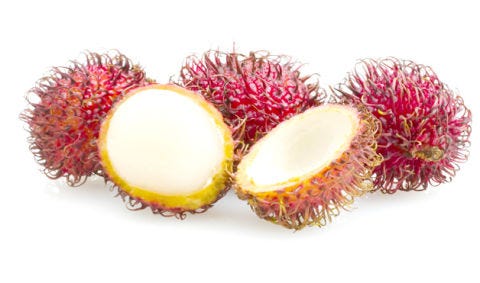
This Ping-Pong-ball-size red fruit is indigenous to Malaysia, and has also been cultivated throughout Thailand, South Vietnam, Indonesia, the Philippines, India and Sri Lanka. It features a thin, leathery skin covered in tiny pinkish hairs for which it is named (in Malay, rambut means hair). A relative of the lychee, it has a white or pinkish flesh on the inside that is described as juicy and sweet. It's often eaten fresh or canned, in salads and, more recently, in high-end cocktails.
Durian

This Southeast Asian delicacy is known first and foremost for its potent odor, which is said to be similar to rotting food or garbage. It's so pungent, in fact, that it's banned from certain restaurants and hotels, as the smell can linger for days. The durian tree does not bear fruit until it is 15 years old, making its prized crop very expensive—up to $50 per fruit, according to National Geographic. About the size of a volleyball, the fruit's shell is covered in short spikes, and needs to be broken open like a coconut to reach the fleshy middle, which can be eaten raw, but is also used in anything from Malaysian candy and ice cream to traditional soups.
African Cucumber
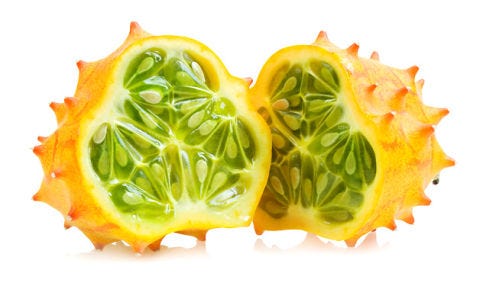
Also known as the horned melon, jelly melon, kiwano or hedged gourd, the African cucumber is a vibrant fruit, featuring a mosaic of green and yellow colors on the inside and bright orange on the outside. It originates in the Kalahari Desert—which spans from central Botswana to west central South Africa and eastern Namibia—but can now be found in California and New Zealand. The taste has been compared to cucumber and zucchini, or a mix of banana, cucumber and lemon, and it is often used for decorating platters or as an ingredient in smoothies and sundaes.
Ackee
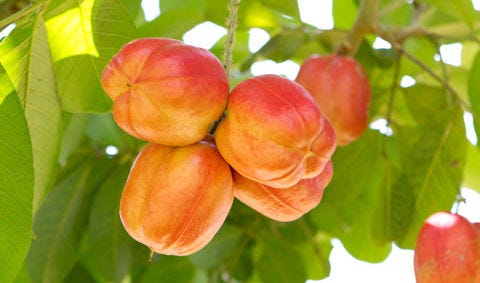
Native to West Africa, the ackee is now mostly produced and consumed in the Caribbean, particularly in Haiti and Jamaica, where it is the national fruit. Measuring up to 4 inches in diameter, this bulbous fruit grows on the evergreen ackee tree. It has a yellow and red leathery skin and must open naturally, at least partially, revealing thick, cream-colored sections attached to three shiny black seeds, before it is removed from the tree. (An unripe ackee can be poisonous when eaten.) The nutty-flavored flesh is often parboiled in salted water or milk and then lightly fried in butter. It's also served with codfish, added to stews, or curried and eaten with rice.
Buddha's Hand

Also known as bushukan or fingered citron, this citrus fruit—whose skin somewhat resembles that of a lemon—is native to southwestern China and northeastern India, and looks like a giant-fingered hand or yellow squid. The fruit is in season in winter, and can grow up to 12 inches. When split vertically, it reveals a white, juiceless and often seedless flesh. Prized for its fragrant scent (like that of violets), its thick yellow rind is often used to make jam and marinades, to flavor liquors and perfume clothing. In Japan, it is also considered to be a good luck totem for New Year's, and is displayed as a decoration in homes.
Monstera Deliciosa
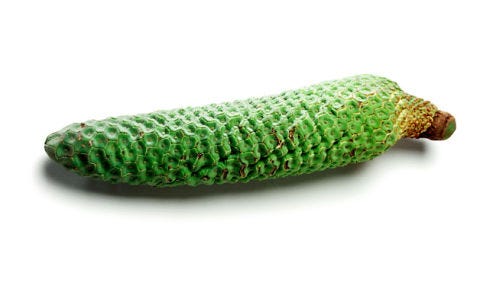
Native to Mexico and Central America, this shiny plant is largely grown for ornamental purposes, but its fruit, which is shaped like an ear of corn and is the only nonpoisonous part of the plant, is popular in the tropics. It takes just over a year for the fruit to ripen; when it does, the scales begin to separate, allowing the white flesh inside to peek through. Said to taste like a blend of pineapple and banana, it's often eaten fresh, served with a bit of cream, added to fruit cups and ice cream, or used to flavor beverages.
Chayote
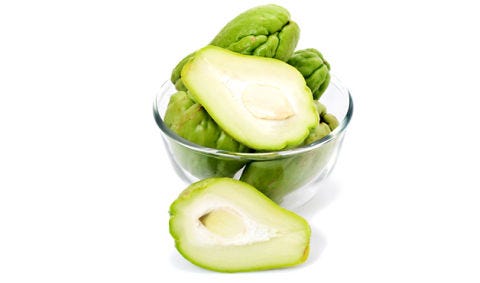
Native to Mexico, this fleshy, pear-shaped plant is also known as vegetable pear, chocho, mirliton and christophene, and belongs to the same family as melons, cucumber and squash. Originally from Central America (it's believed to be native to Guatemala specifically), the light green fruit is now cultivated throughout Mexico and in certain parts of America. Each fruit can weigh anywhere from 6 ounces to 3 pounds, with flesh that's similar to that of a water chestnut. It can be prepared in a number of ways, including boiled, mashed, pickled and fried, and is used in everything from juice to jams.
Cherimoya
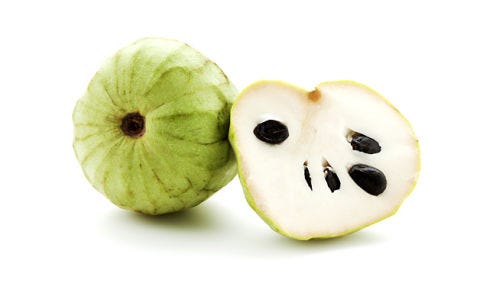
Native to the valleys of Bolivia, Colombia and Ecuador—and subsequently grown in Chile and Peru—this oval fruit can weigh up to 5 pounds and consists of a smooth, green skin and plump white inside that's pitted with dark brown seeds (which are not edible). Its flesh is juicy and fragrant, with a custard-like consistency that is said to taste like a mix of banana, passion fruit, papaya and pineapple. It can be cut in half, scooped out and eaten raw, used in salads, puréed and made into mousse, folded into a pie or tart filling, or frozen and eaten like ice cream.
Salak

Native to Indonesia and Malaysia, salak—also known as snake fruit or snakeskin fruit—is the shape and size of a ripe fig but with a pointed tip and brown scaly skin. It's prepared by breaking off the tip and peeling back the skin to reveal three yellowish-white lobes and a dark brown seed. It has a crisp texture and sweet flavor, making it a popular choice for fruit salad. It's also used in soups and custards, and can also be found canned in syrup, candied, pickled or dried.
Dragon Fruit
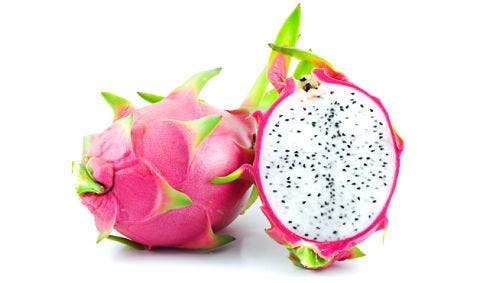
Most popular in Southeast Asia, dragon fruit is eaten around the world, including in Mexico and Central and South America. This pomegranate-size fruit is quite vibrant, with bright pink skin and large, green-tipped scales; inside, it contains a white or fuchsia-colored flesh that's dotted with tiny black seeds. Slightly sweet and crunchy, the fruit is said to taste faintly like a mix of kiwi and pear or melon. To be eaten, it is cut down the middle and the soft inside is scooped out. Though often eaten fresh, it's also used in juices or frozen drinks, or tossed into fruit salad.
This content is created and maintained by a third party, and imported onto this page to help users provide their email addresses. You may be able to find more information about this and similar content at piano.io
Is Compassion a Fruit of the Spirit
Source: https://www.womansday.com/food-recipes/food-drinks/a2381/10-exotic-fruits-youve-probably-never-tried-116713/